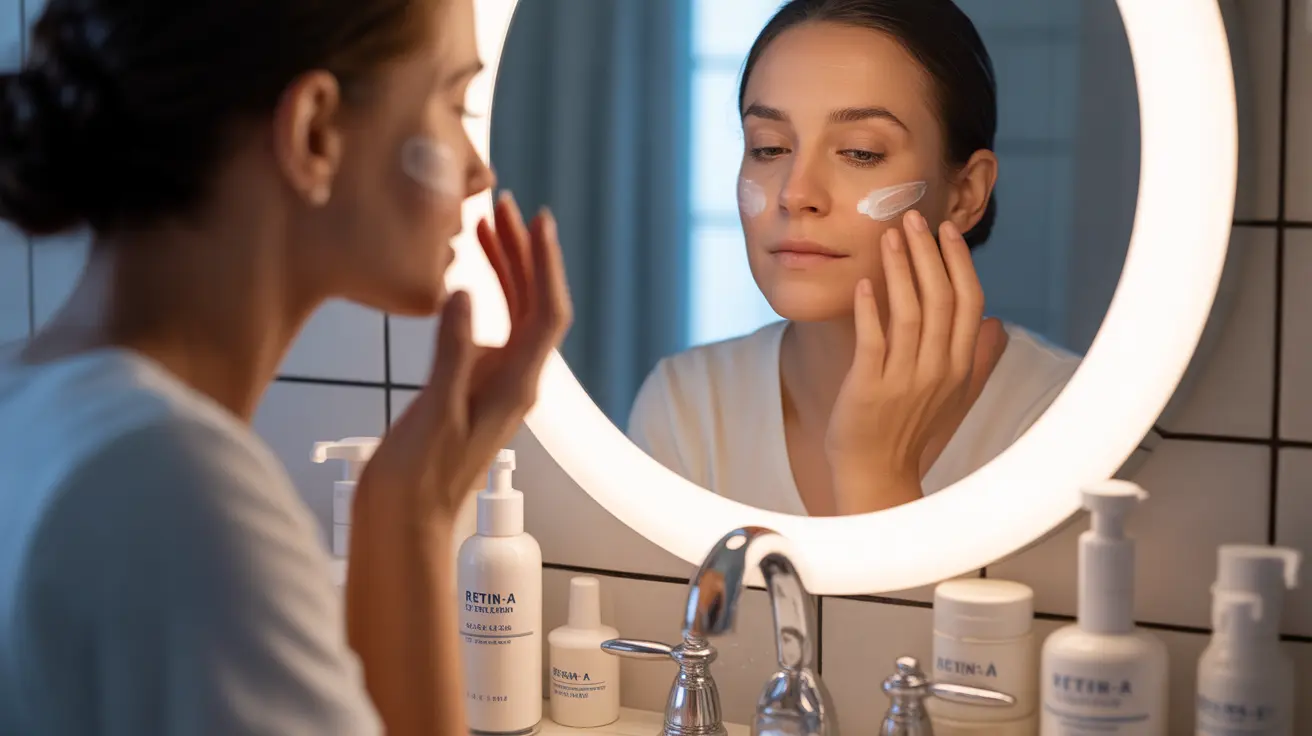Acne is a common skin condition that affects millions of people worldwide. While there are numerous treatments available, Retin-A has emerged as a powerful and effective option for many individuals struggling with acne. In this article, we'll explore how Retin-A works to combat acne, its benefits, potential side effects, and tips for maximizing its effectiveness.
What is Retin-A and How Does It Work?
Retin-A, also known by its generic name tretinoin, is a topical retinoid derived from vitamin A. It's primarily used to treat acne but has also shown benefits for reducing the appearance of fine lines and wrinkles. Retin-A works in several ways to combat acne:
- Increasing cell turnover
- Unclogging pores
- Reducing inflammation
- Preventing the formation of new acne lesions
By accelerating the skin's natural exfoliation process, Retin-A helps to clear existing acne and prevent new breakouts from forming. This makes it an effective treatment for various types of acne, including blackheads, whiteheads, and inflammatory acne.
Benefits of Using Retin-A for Acne
Retin-A offers several benefits for those struggling with acne:
1. Effective Acne Treatment
Retin-A is clinically proven to reduce acne lesions and improve overall skin appearance. It's particularly effective for treating comedonal acne (blackheads and whiteheads) and can also help with inflammatory acne.
2. Long-term Skin Health
Regular use of Retin-A can lead to improved skin texture and tone over time. It stimulates collagen production, which can help reduce the appearance of acne scars and fine lines.
3. Versatility
Retin-A can be used alone or in combination with other acne treatments, making it a versatile option for various skin types and acne severities.
Common Side Effects and How to Manage Them
While Retin-A is effective, it can cause some side effects, especially when first starting treatment. Common side effects include:
- Skin dryness and peeling
- Redness and irritation
- Increased sensitivity to sunlight
- Temporary worsening of acne (purging)
To manage these side effects:
- Start with a lower concentration and gradually increase usage
- Apply a small amount of product and use it every other night initially
- Use a gentle, non-comedogenic moisturizer to combat dryness
- Always wear sunscreen during the day to protect your skin
It's important to note that these side effects are usually temporary and tend to improve as your skin adjusts to the treatment.
Using Retin-A for Acne Scars and Skin Aging
In addition to treating active acne, Retin-A has shown promise in addressing acne scars and signs of aging. The increased cell turnover and collagen production stimulated by Retin-A can help improve the appearance of shallow acne scars over time. Additionally, its anti-aging properties can reduce fine lines, wrinkles, and improve overall skin texture.
While Retin-A is not a quick fix for deep acne scars, consistent long-term use may lead to noticeable improvements in skin texture and tone.
Timeline for Seeing Results
When using Retin-A for acne treatment, patience is key. Most people start to see improvements in their skin within 6-8 weeks of consistent use. However, it can take up to 3-6 months to see significant results. During the initial weeks, some users may experience a temporary worsening of acne (known as purging) as the skin adjusts to the treatment.
It's crucial to continue using Retin-A as directed by your healthcare provider, even if you don't see immediate results. Consistency is key to achieving and maintaining clear skin.
Tips for Effective Use of Retin-A
To maximize the benefits of Retin-A and minimize potential side effects, consider the following tips:
- Apply Retin-A to clean, dry skin in the evening
- Wait 20-30 minutes after washing your face before applying Retin-A
- Use only a pea-sized amount for your entire face
- Avoid applying Retin-A to sensitive areas like the corners of your nose and mouth
- Don't use other potentially irritating skincare products (like exfoliants or benzoyl peroxide) at the same time as Retin-A
- Always use sunscreen during the day, as Retin-A can increase sun sensitivity
Remember, Retin-A is a powerful medication, and it's essential to follow your healthcare provider's instructions carefully.
Frequently Asked Questions
- How does Retin-A work to treat acne, and what are its benefits?
Retin-A works by increasing cell turnover, unclogging pores, and reducing inflammation. Its benefits include effective acne treatment, improved skin texture, and potential reduction in the appearance of acne scars and fine lines.
- What are the common side effects of using Retin-A for acne, and how can they be managed?
Common side effects include dryness, peeling, redness, and increased sun sensitivity. These can be managed by starting with a lower concentration, using the product less frequently initially, moisturizing regularly, and always using sunscreen.
- Can Retin-A be used for acne scars, and does it also help with skin aging?
Yes, Retin-A can help improve the appearance of shallow acne scars over time. It also has anti-aging benefits, helping to reduce fine lines and wrinkles and improve overall skin texture.
- How long does it typically take to see results from using Retin-A for acne treatment?
Most people start to see improvements within 6-8 weeks, but significant results may take 3-6 months of consistent use. Some may experience a temporary worsening of acne (purging) in the initial weeks.
- Are there any specific tips for reducing irritation and improving the effectiveness of Retin-A when treating acne?
To reduce irritation and improve effectiveness, apply Retin-A to clean, dry skin at night, use only a pea-sized amount, avoid sensitive areas, don't combine with other potentially irritating products, and always use sunscreen during the day.
Retin-A can be a game-changer for those struggling with acne. While it may require patience and careful use, the potential for clearer, healthier-looking skin makes it a valuable treatment option. Always consult with a dermatologist or healthcare provider to determine if Retin-A is right for your specific skin concerns and to receive personalized usage instructions.




